recoveriX is a unique combination of 7 therapies

Motor Imagery (MI)
Imagine a hand or a foot movement. recoveriX measures and analyses brain waves, which reflects the motor imagery and determines whether the motor imagery was correct.
Once motor imagery has been recognized, virtual reality and functional electrical stimulation will be activated.
The positive impacts
Unlike conventional physiotherapy, the BCI guarantees that actual movements only occur when people imagine the corresponding
movement.

Virtual Reality (VR)
The simulation on the screen makes motor imagery visible. Patients sit in front of a screen, where they see hands and feet of an avatar. This gives patients the feeling of watching their own movements in front of a mirror.
The positive impacts
If recoveriX recognizes motor imagery of the movement (such as a right hand movement), the avatar moves the right hand.

Electrical Stimulation (FES)
For this stimulation, two electrodes are placed (for example) on the dorsiflexors of the wrist or on the leg. If the system recognizes a correct motor imagery, the muscles get electrically stimulated, causing a real movement.
This should help you re-learn how to initiate movement, and thus make movement possible again.
The positive impacts
The patient is motivated because the experience repeatedly reminds the patient of the desired goal: being able to move again.
Increasing the success of the therapy
recoveriX integrates cognitive tasks with movement exercises, which increases the chances of success of the therapy not only for stroke patients, but also for patients with multiple sclerosis.

Mirror Neuron therapy
Mirror neurons are activated when a person observes the same behavior in another person.
The positive impacts
When recoveriX recognizes the mental imagination of movement in the patient’s EEG signals, such as the movement of the right hand, the virtual avatar on the screen simulates the corresponding movement in real time.
This visual feedback is similar to mirror neuron therapy.

Bilateral Training
recoveriX encourages the patient to practice motor imagery of both sides of the body, e.g. the affected right foot or the left hand. This approach is designed to support the activation of both hemispheres of the brain.
The positive impacts
Stimulating both hemispheres of the brain improves the coordination of movements and increases fine and gross motor skills on the impaired side.

Task-Based Training
By imagining the movement, the patient controls the avatar and can trigger actual movement through electrostimulation. If performed correctly, the hand or foot is raised and the patient can touch a small virtual ball.
The positive impacts
The repeated activation of the movement promotes new neuronal connections in healthy areas of the brain, which ultimately control the muscle movements correctly.
Constraint-induced movement therapy
During recoveriX therapy, the healthy limb is constrained to stimulate the impaired limb. Patients must repeatedly imagine the movements of both the healthy and the impaired sides.
The positive impacts
This method promotes coordination between the two hemispheres and can help to reduce spasticity and normalize temperature regulation.

